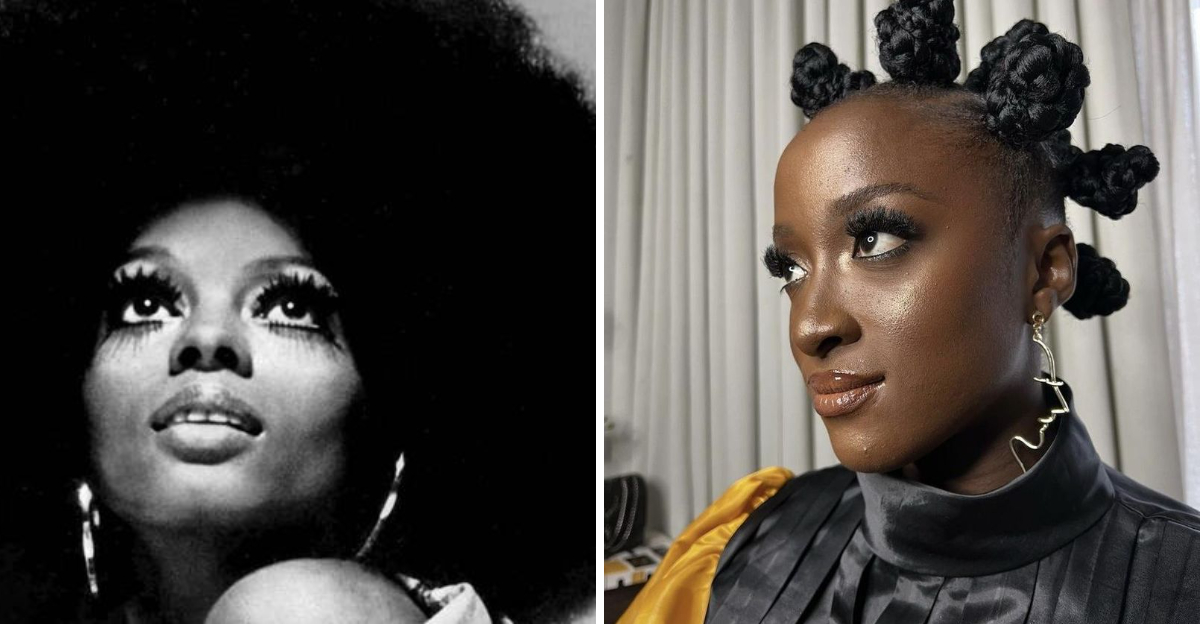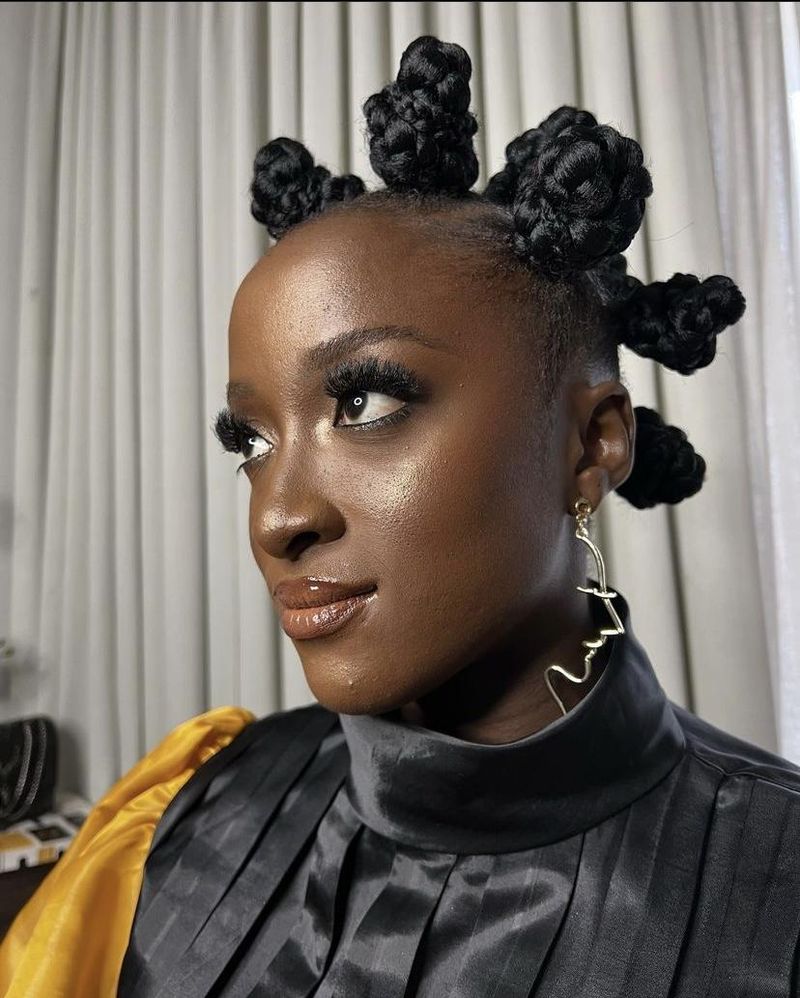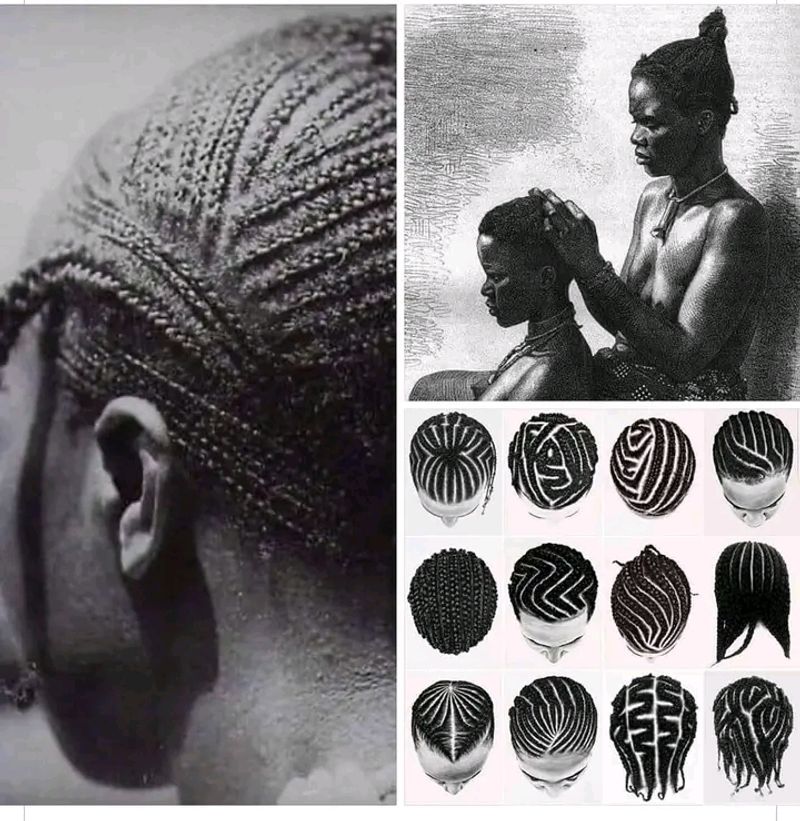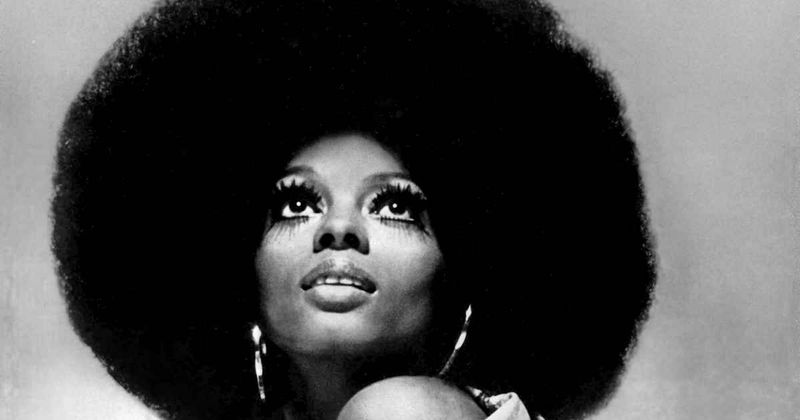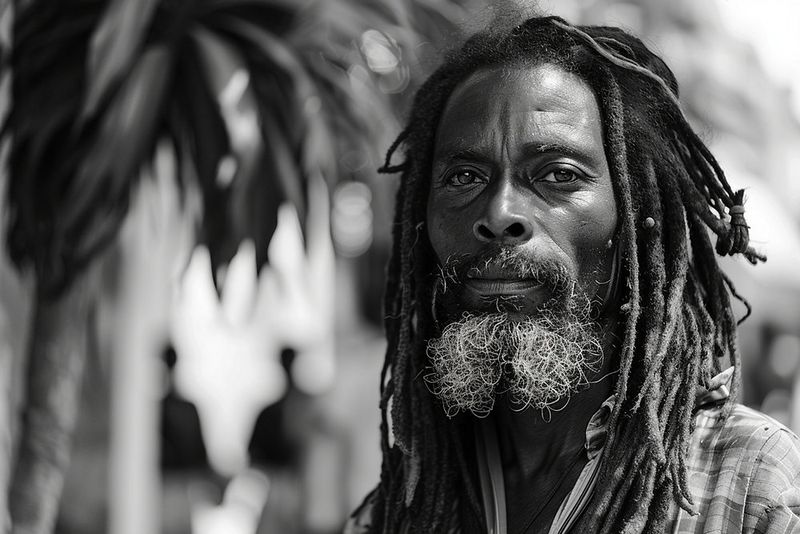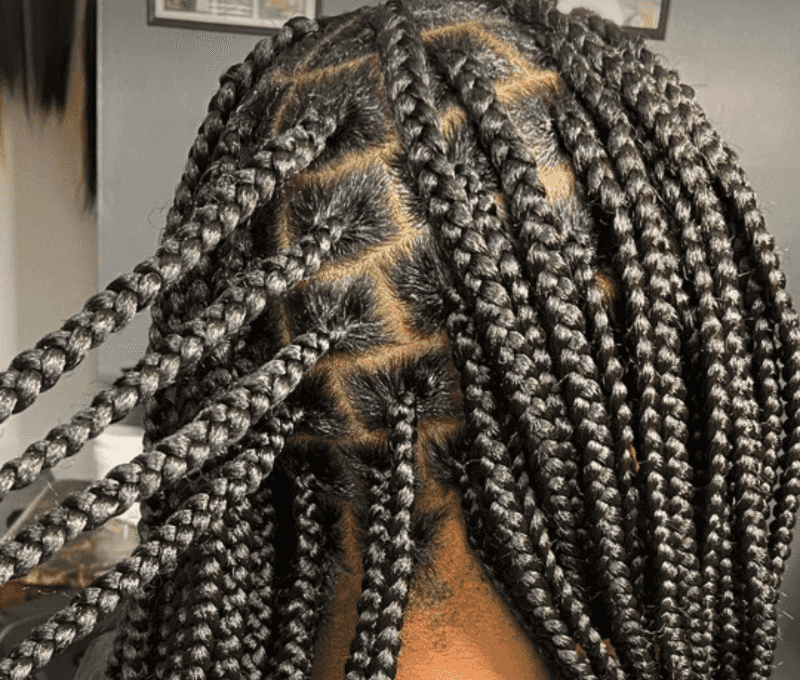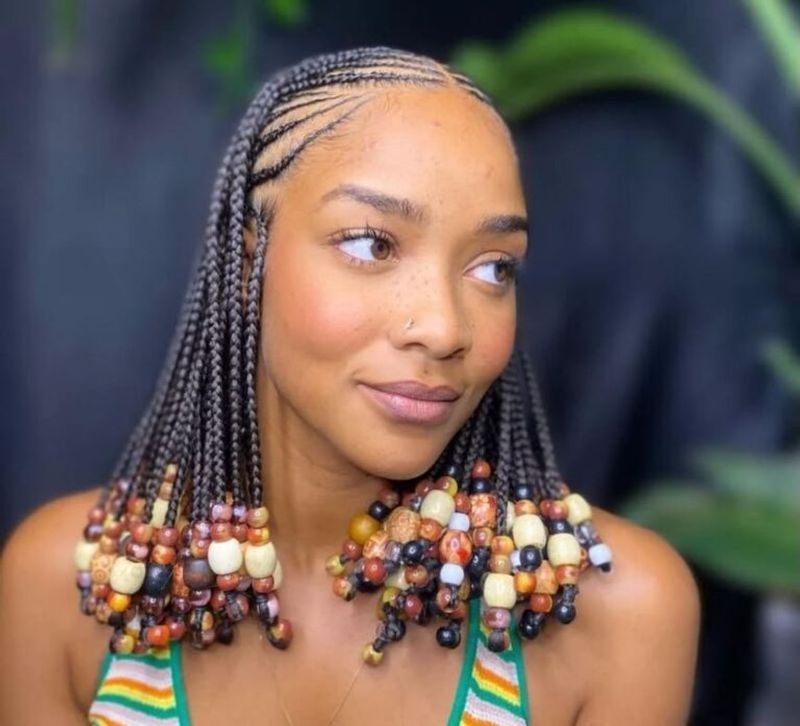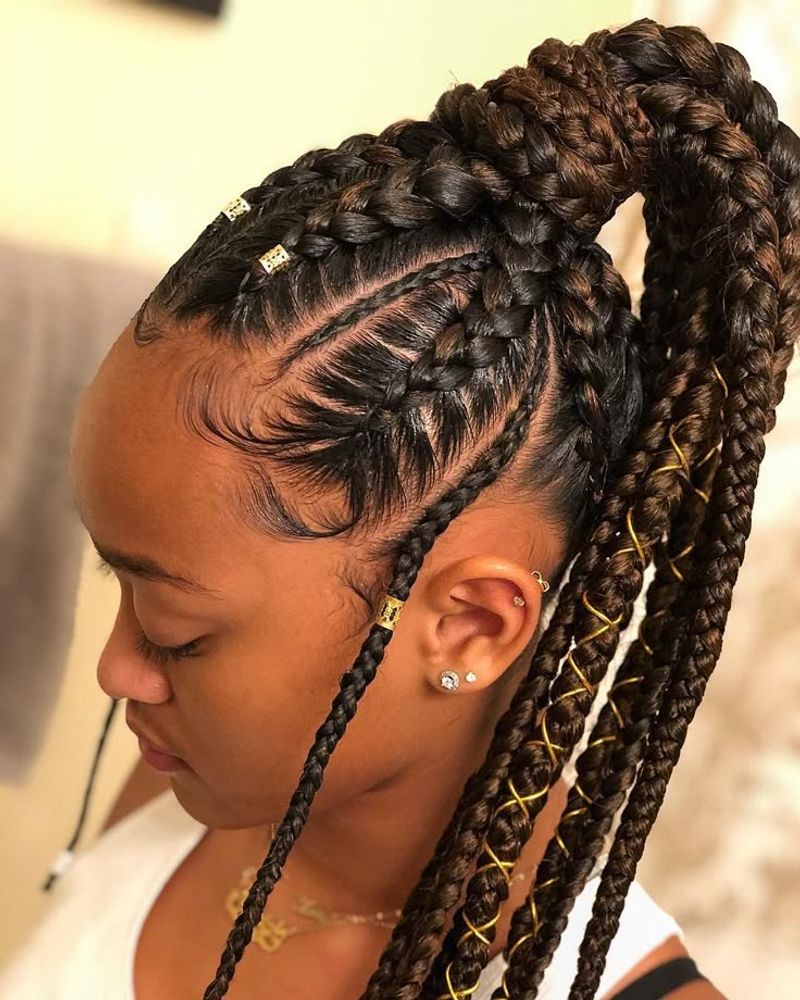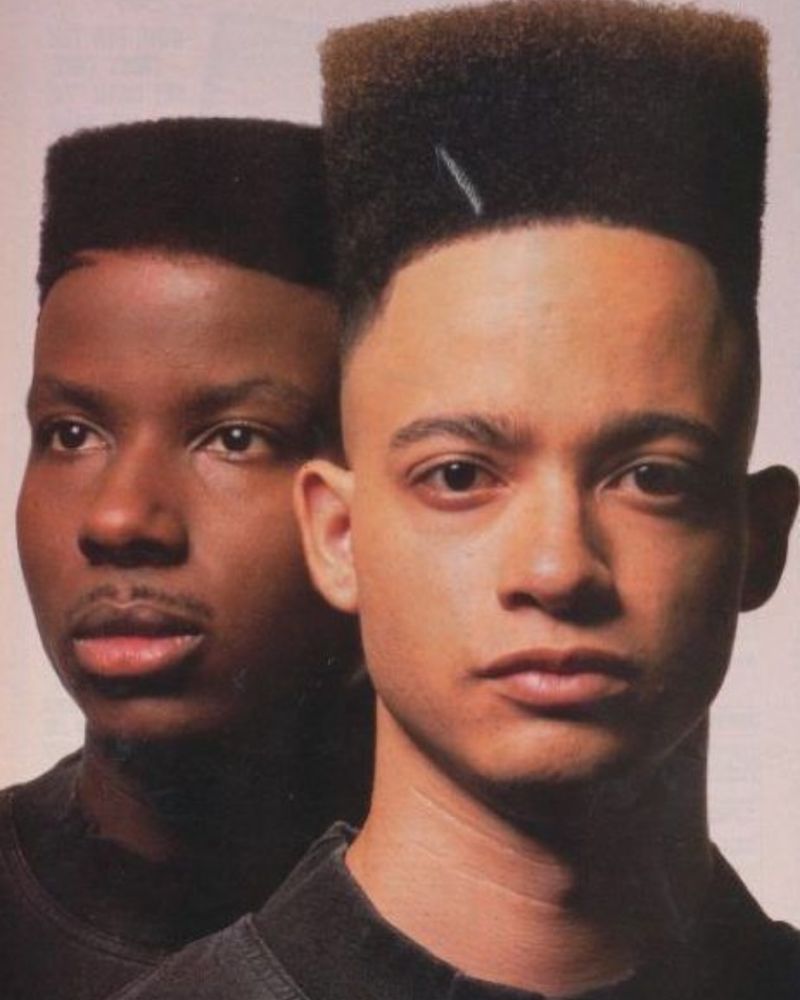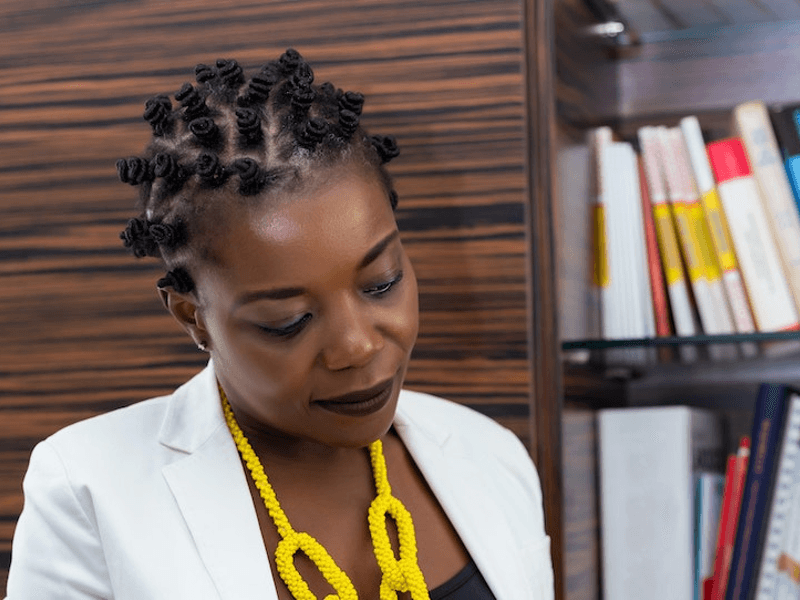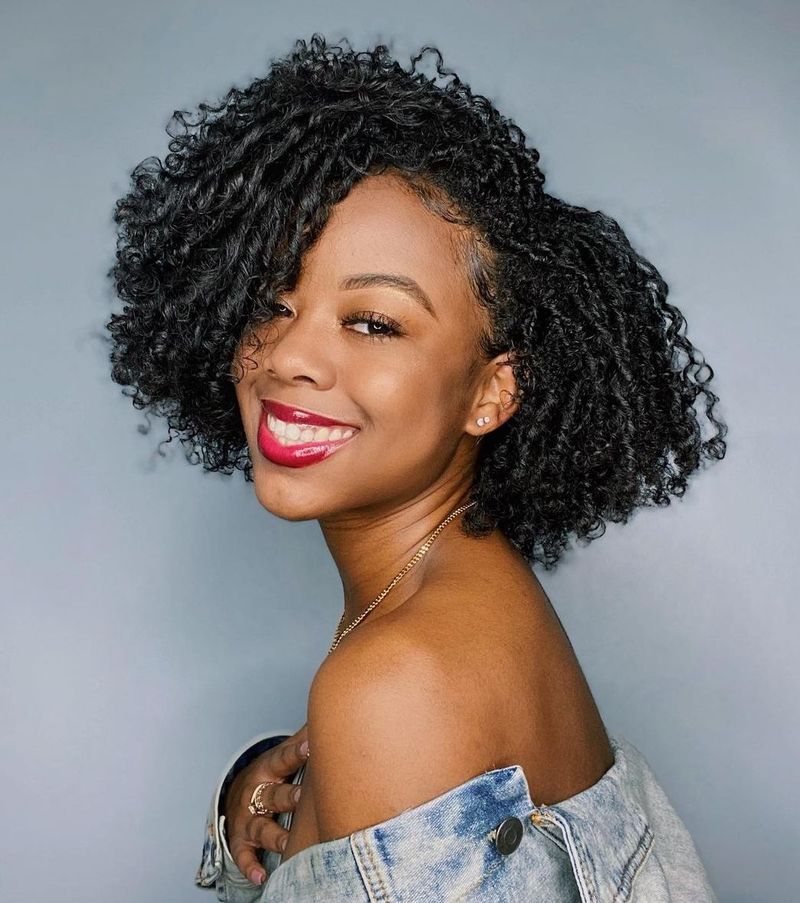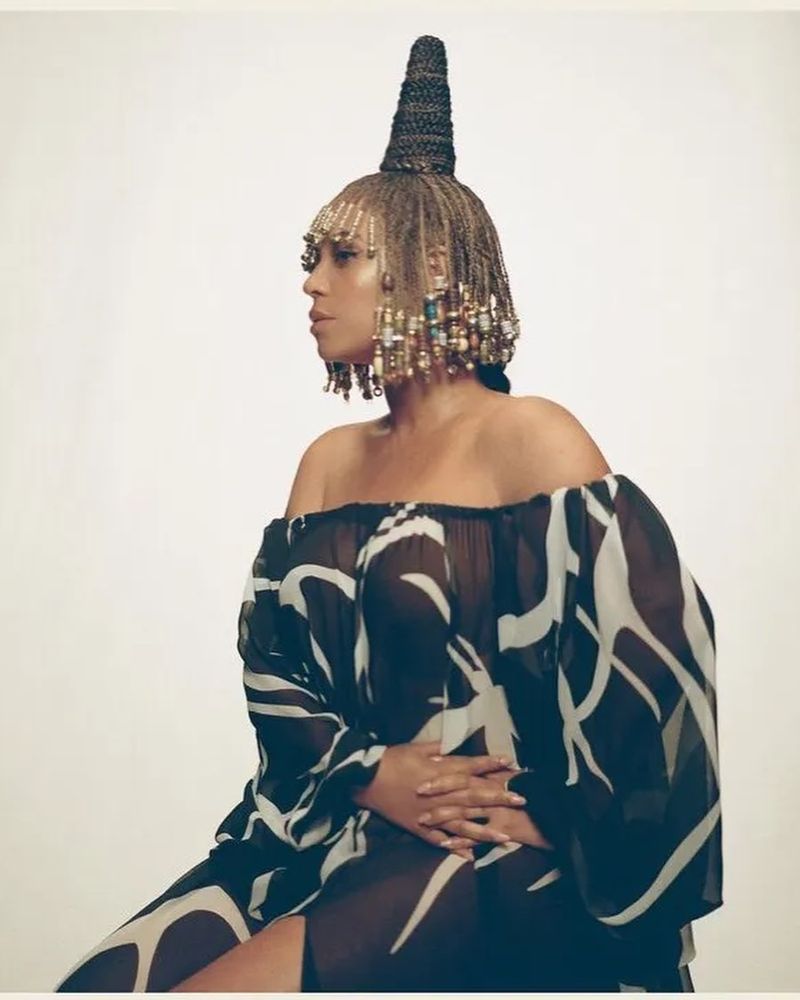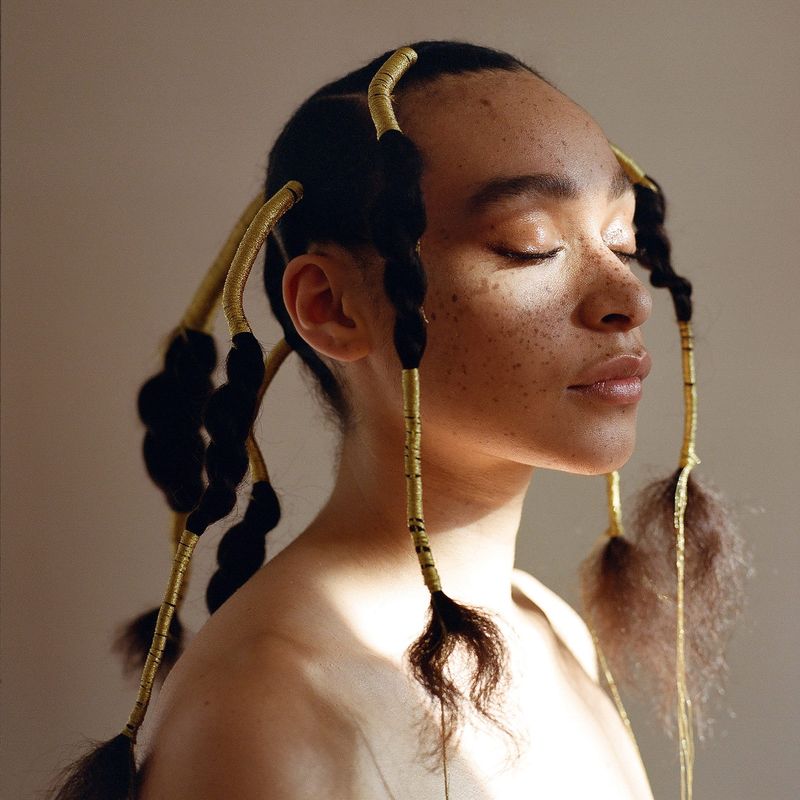Black hairstyles have been powerful symbols of heritage, resistance, and self-expression throughout history.
From intricate braiding techniques passed down through generations to revolutionary styles that defined social movements, these hairstyles tell stories of cultural pride and identity.
1. Bantu Knots
Named after the Bantu people of Southern Africa, these spiraled knots have ancient roots dating back centuries. Small sections of hair are twisted and coiled into tight buns across the scalp.
Related: -Thinking About Box Braids? Here Are 17 Things You Should Know
Modern celebrities like Rihanna have brought renewed attention to this protective style that honors African heritage while offering versatile styling options.
2. Cornrows
Cornrows trace back to 3000 B.C. in Africa, where intricate braiding patterns often indicated social status, age, and tribal identity. The name comes from their resemblance to rows of corn in a field.
These tight, flat braids against the scalp served practical purposes while traveling the Underground Railroad, sometimes hiding maps to freedom within the patterns.
3. Afro
De iconische Afro emerged as a powerful symbol during the Civil Rights and Black Power movements of the 1960s and 70s. Embracing natural hair texture represented rejection of Eurocentric beauty standards.
Activists like Angela Davis wore the style as a political statement, transforming personal grooming into revolutionary expression of Black pride and identity.
4. Dreadlocks
Sacred to Rastafarian culture, dreadlocks represent spiritual growth and connection to Biblical figure Samson, whose strength came from his uncut hair. The style gained prominence through reggae icon Bob Marley.
Beyond Jamaica, various African cultures independently developed similar styles, with the Maasai warriors of East Africa being particularly renowned for their red-dyed locks.
5. Box vlechten
Box braids originated in ancient Egypt and North Africa around 3500 B.C., with evidence found in tomb paintings and sculptures. The distinctive square-shaped parts create the recognizable grid pattern.
Janet Jackson’s role in the 1993 film ‘Poetic Justice’ catapulted this protective style into mainstream popularity, sparking a renaissance of traditional African braiding techniques.
6. Fulani vlechten
Originating with the Fulani people of West Africa, these braids feature a central cornrow with hanging braids framing the face. Gold accessories and beads traditionally adorn the style.
Tribal patterns in the braiding often tell stories of family lineage and social status. Today’s interpretations blend ancestral techniques with contemporary fashion sensibilities while honoring their cultural roots.
7. Jheri Krul
The glossy, loosely curled Jheri curl defined 1980s Black hair fashion, made famous by Michael Jackson and other celebrities. Created by hairstylist Jheri Redding, it required significant maintenance with special products.
Despite its popularity, the style became the subject of cultural commentary in films like ‘Coming to America,’ which highlighted the impracticality of its constant moisture requirements.
8. Fade
The fade emerged from Black barbershop culture in the 1940s and evolved into countless variations. Military servicemen popularized the style before it became a cornerstone of hip-hop fashion in the 1980s.
Barbers developed the technique of gradually “fading” hair from longer on top to shorter on the sides, creating a canvas for personalized expression through precise line-ups and designs.
9. Godinnenvlechten
Thicker than traditional cornrows, goddess braids create elevated patterns that crown the head like a divine adornment. Ancient African royalty wore similar styles as symbols of status and spiritual connection.
The technique requires exceptional skill, with braiders often spending hours creating intricate designs that showcase both cultural heritage and artistic expression. Modern adaptations incorporate colorful extensions and jeweled accessories.
10. High-Top Fade
The high-top fade reached peak popularity during the late 1980s and early 90s hip-hop era. Kid ‘n Play, Fresh Prince, and other cultural icons helped define this bold, geometric style.
Barbers elevated the traditional fade by leaving significant length on top, sometimes reaching several inches high. The style represented urban Black expression and creativity during a pivotal era in hip-hop culture.
11. Nubian Knots
Ancient Nubian artwork depicts these distinctive small coiled knots arranged across the head. Archaeological evidence suggests the style dates back to 3000 B.C. in what is now Sudan and southern Egypt.
Similar to modern two-strand twists, the style protected hair while creating a distinctive appearance that signified cultural belonging. Contemporary versions maintain the ancient technique while incorporating new styling elements.
12. Finger Waves
Popularized during the Harlem Renaissance of the 1920s, finger waves created elegant, rippled patterns pressed into shorter hair using fingers and styling tools. Jazz Age entertainers like Josephine Baker showcased the sophisticated style.
The technique transformed shorter cuts into artistic statements, requiring significant skill to create the distinctive S-pattern waves. The style has experienced multiple revivals throughout the decades.
13. Twist-Out
The twist-out celebrates natural hair texture by creating defined curls without heat damage. Hair is twisted while damp, allowed to dry completely, then unraveled to reveal springy, voluminous curls.
This versatile style gained popularity during the natural hair movement of the early 2000s. It honors African hair textures while providing endless styling possibilities for different curl patterns.
14. Crown Braids
Crown braids encircle the head like a natural coronet, symbolizing royalty and dignity across numerous African cultures. Ethiopian women particularly perfected this style, creating intricate patterns for ceremonial occasions.
The technique requires exceptional skill, with hair braided close to the scalp in circular patterns. Modern interpretations incorporate additional elements while maintaining the regal silhouette that honors ancestral traditions.
15. Thread Wrapping
Ancient Egyptians and West Africans pioneered this intricate technique where colorful threads were wrapped around sections of hair to create stunning geometric patterns. The threads would protect the hair while allowing intricate designs that signified social status, age, or tribal affiliation.
Women would spend hours together during these sessions, transforming the hair-wrapping ritual into important social bonding experiences. Knowledge passed between generations created unique family and regional styling signatures.
Modern interpretations incorporate beads and cowrie shells for added dimension. Thread wrapping has experienced a renaissance as younger generations connect with ancestral practices while adding contemporary twists, proving these techniques have survived centuries precisely because they blend practicality with breathtaking artistry.

